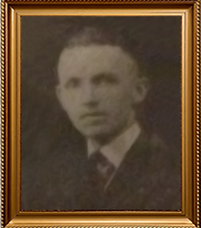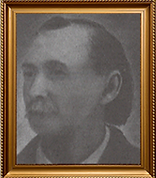Our History
About Delta tau Delta
Chapter History

Luther D. Wallis

Stanley S. Simpson
In June 1919, with World War I concluded, two Georgia Tech students, Stanley S. Simpson and Luther D. Wallis, initiated the idea of forming a new fraternity at Tech. On the advice of English professor Arthur H. Armstrong, a Beta from Yale, Simpson and Wallis formed a local fraternity with the hopes of petitioning a national fraternity.
The new fraternity was called Pi Phi Delta, and eleven members were selected in the fall of 1919 on the basis of personal appearance, congeniality, social standing, and campus activities. A petition to the school for recognition was submitted in January 1920. The petition outlined Pi Phi Delta’s founding principles: scholarship, Christian fellowship, and personal honor. In addition, Pi Phi Delta was the first at Tech to adopt non-discriminatory policies toward co-op and ROTC students. Their first president was John H. Staffield, and the faculty advisor was Armstrong.
By April, 1920, the members felt they were sufficiently established to get in touch with a strong national fraternity. The candidates were narrowed down to Sigma Chi and Delta Tau Delta. Frank Rogers, a member of the Delt Arch Chapter, visited the colony and in August, Pi Phi Delta petitioned Delta Tau Delta for a charter.
On April 21, 1921, the Delt National President, Alexander Bruce Bielaski, signed the charter thus creating the Gamma Psi chapter. The initiation was held on May 3, 1921 in the Rainbow Room of the Ansley Motel. Beta Epsilon chapter of Emory University conducted the ceremony, and Frank Rogers was present to see the twenty-two men become Delts for life. Stanley S. Simpson resided in the Briarcliff area of Atlanta until his death in 1977. Colonel Luther D. Wallis was shot down over Lisbon Bay, Portugal in 1944 while serving in Eisenhower’s invasion of Europe.
Fraternity History
In 1858 Delta Tau Delta was founded at Bethany College when eight undergraduates, angered by a fixed vote for a prize in oratory to be given at the Neotrophian Literary Society, the only real forum for students to practice and demonstrate skills in poetry, public speaking, and writing essays, responded by forming a secret society. The purpose of the new society was to see that the Neotrophian Society was returned to a normal democracy.
The second chapter of Delta Tau Delta was established at West Liberty College, Virginia (now West Virginia), in the fall of 1859. A year later, a third chapter was initiated at Monongalia Academy (later West Virginia University) when John R. Thornton of the West Liberty chapter enrolled at that institution. By the end of the school year in 1860, the Alpha Chapter at Bethany had enrolled a total of twenty-six members.
During the year 1860, a fire destroyed much of Bethany and all of the early Fraternity records. Additionally, the Civil War thinned the ranks of the three Virginia chapters to such an extreme that the future of the Fraternity was in grave danger. In 1862, two Jefferson College Students, Rhodes S. Sutton and Samuel S. Brown, rode horseback down to Bethany College in order to be initiated into Delta Tau Delta. This was known as “The Ride”. These two men then established the fourth chapter at Jefferson College in Canonsburg, PA.
When Civil War conditions ultimately caused the three Virginia chapters to suspend operations temporarily, the historic ride of Sutton and Brown proved to be the means of saving the continuous existence of the Fraternity. This forced the Alpha Chapter to be moved to Jefferson College in Cannonsburg, PA (Alpha Chapter from 1861 – 1869).
Due to the unsteady nature of many colleges at the time, the Alpha Chapter was moved to Ohio Wesleyan College (Alpha Chapter from 1869 – 1874) and finally to Allegheny College in Meadville, PA, where it still resides today. In 1886, Delta Tau Delta merged with the Rainbow Society, a respected Southern Fraternity. Their colors were then adopted by Delta Tau Delta.
Since then, Delta Tau Delta has enjoyed a prolonged period of growth. Delta Tau Delta now has 115 undergraduate chapters and colonies, about 6,000 active undergraduates, over 115,000 living alumni, and has initiated over 145,000 members since its founding.
Founder’s House








In this house, 8 Bethany College Students – William R. Cunningham, Alexander C. Earle, Richard H. Alfred, Henry K. Bell (top row, left to right), John C. Johnson, Jacob S. Lowe, Eugene Tarr, and John L.N. Hunt (bottom row, left to right) – Met in 1858 and founded Delta Tau Delta. This social fraternity soon spread across the American Continent. In 1977, plans were completed for the restoration of this structure to its original condition.
The birthplace of Delta Tau Delta has been preserved and stands today near the main gate of Bethany College, nestled in a quiet valley in the West Virginia hills. Today it is known as The Bethany House or The Founders House. The two-story red brick house where the eight founders of Delta Tau Delta gathered in 1858 was formally restored in 1977. The house today appears as it did in 1858 when eight Bethany students met in the upstairs room to found a fraternity that would later span the continent.
